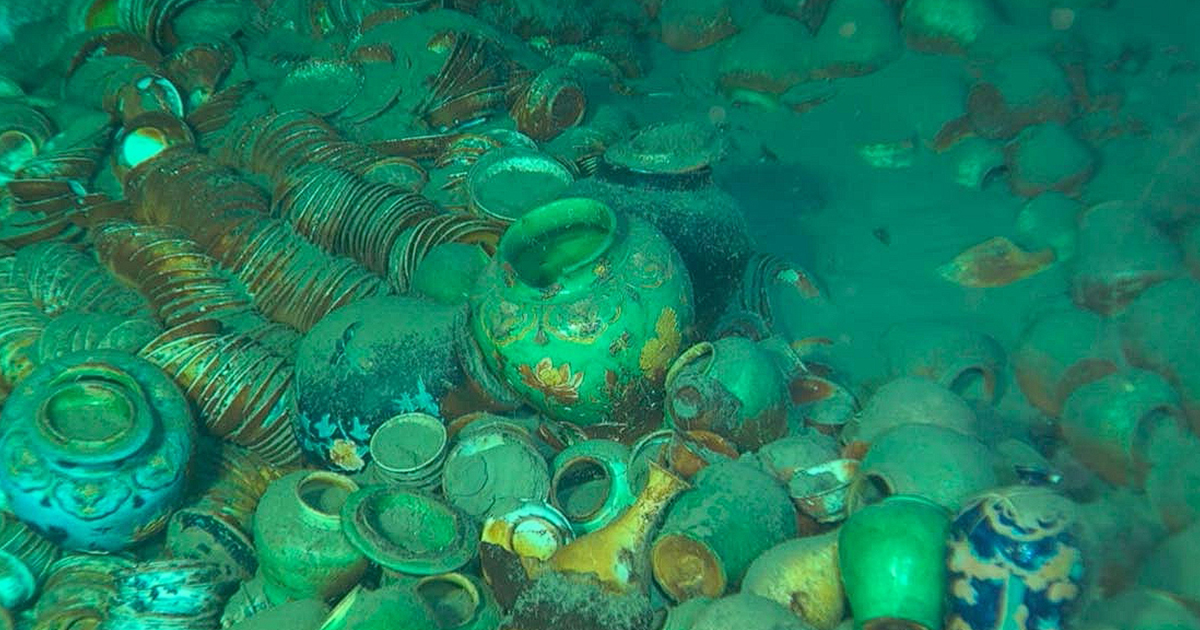Introduction:
Far beneath the expansive ocean depths lie a trove of historical riches waiting to be uncovered. The Ming Dynasty, celebrated for its maritime triumphs, holds a pivotal role in the annals of China’s seafaring yesteryears. Recent times have witnessed a surge in the revelation of Ming Dynasty shipwrecks, captivating the interests of both archaeologists and history aficionados alike, offering a rare glimpse into a bygone epoch. These remarkable discoveries shed illumination on the thriving marine trade, technological advancements, and cultural amalgamations that characterized this extraordinary phase of Chinese history.
Unraveling Submerged Mysteries:
The Ming Dynasty (1368-1644 CE) represents a seminal epoch in China’s naval prowess. Emperor Zhu Di, in this era, sanctioned a majestic fleet of vessels christened the “Treasure Fleet” to set sail on expeditions to distant realms, forging alliances, engaging in commerce, and showcasing Chinese supremacy. Alas, some of these ships met tragic ends, succumbing to the ocean’s depths, their sagas lost in the sands of time.
Due to the unwavering commitment of marine archaeologists, numerous Ming Dynasty shipwrecks have been unearthed and scrutinized in recent years. Noteworthy among these discoveries are the Nan’ao One and the Wanli Shipwreck, both offering invaluable insights into the period’s maritime navigation techniques, trade routes, and cultural interactions.
The Nan’ao One Chronicles:
Discovered off the shores of Nan’ao Island in 2007, the Nan’ao One stands as a remarkable Ming Dynasty shipwreck that has astounded researchers with its well-preserved artifacts. Sunk circa 1550 CE, this merchant vessel carried a cargo brimming with porcelain, precious metals, and opulent wares. Excavations unveiled over 23,000 artifacts, including intricately crafted porcelain, copper coins, and exquisite gold embellishments. The vessel’s robust framework showcased the Ming Dynasty’s advanced shipbuilding prowess, boasting a sturdy keel and a dual-layered hull tailored for extensive sea voyages.
The Wanli Shipwreck Saga:
Another enthralling discovery, the Wanli Shipwreck, was found off the Malaysian coast in 2008, tracing back to the late 16th century. This well-maintained wreck sheds light on the expansive maritime trade network of the Ming Dynasty. Excavations uncovered a diverse array of goods, ranging from blue-and-white porcelain and ceramics to bronze cannons and remnants of tea leaves. These findings allude to vast trade connections between China, Southeast Asia, and the Middle East. Furthermore, the ship’s cargo hold housed the remains of several crew members, offering glimpses into their daily trials navigating the treacherous seas of that era.
Implications and Importance:
The exploration and unveiling of Ming Dynasty shipwrecks carry profound historical and cultural significance. These submerged relics offer a unique window into China’s maritime exploits, its vibrant trade ties, and its engagements with neighboring lands. They also underscore the technological strides of the Ming Dynasty, encompassing ship construction methodologies, navigation instruments, and cargo storing practices.
Moreover, these shipwrecks unveil the multifaceted facets of the Ming Dynasty’s global transactions, emphasizing the flourishing trade routes connecting East and West, nurturing cultural exchanges, economic prosperity, and diplomatic alliances. The artifacts salvaged from these sunken vessels not only provide tangible evidence of these interactions but also enhance our understanding of the period’s artistic and technological triumphs.
Safeguarding the Past for Posterity:
The examination and preservation of Ming Dynasty shipwrecks pose myriad challenges. The delicate nature of the artifacts, the corrosive effects of seawater, and environmental considerations necessitate meticulous preservation approaches. Collaborative endeavors among archaeologists, historians, and conservators are pivotal in ensuring the enduring protection and analysis of these priceless remnants.
Conclusion:
The ongoing exploration of Ming Dynasty shipwrecks persists in unraveling the enigmas of China’s maritime heritage. These sunken time capsules furnish a tangible bridge to a bygone epoch, enabling us to reconstruct the grand narrative of the Ming Dynasty’s marine escapades. As the quest into the oceanic depths progresses, we eagerly anticipate further disclosures that will enrich our comprehension of ancient civilizations, their global transactions, and the enduring legacy of the Ming Dynasty.
